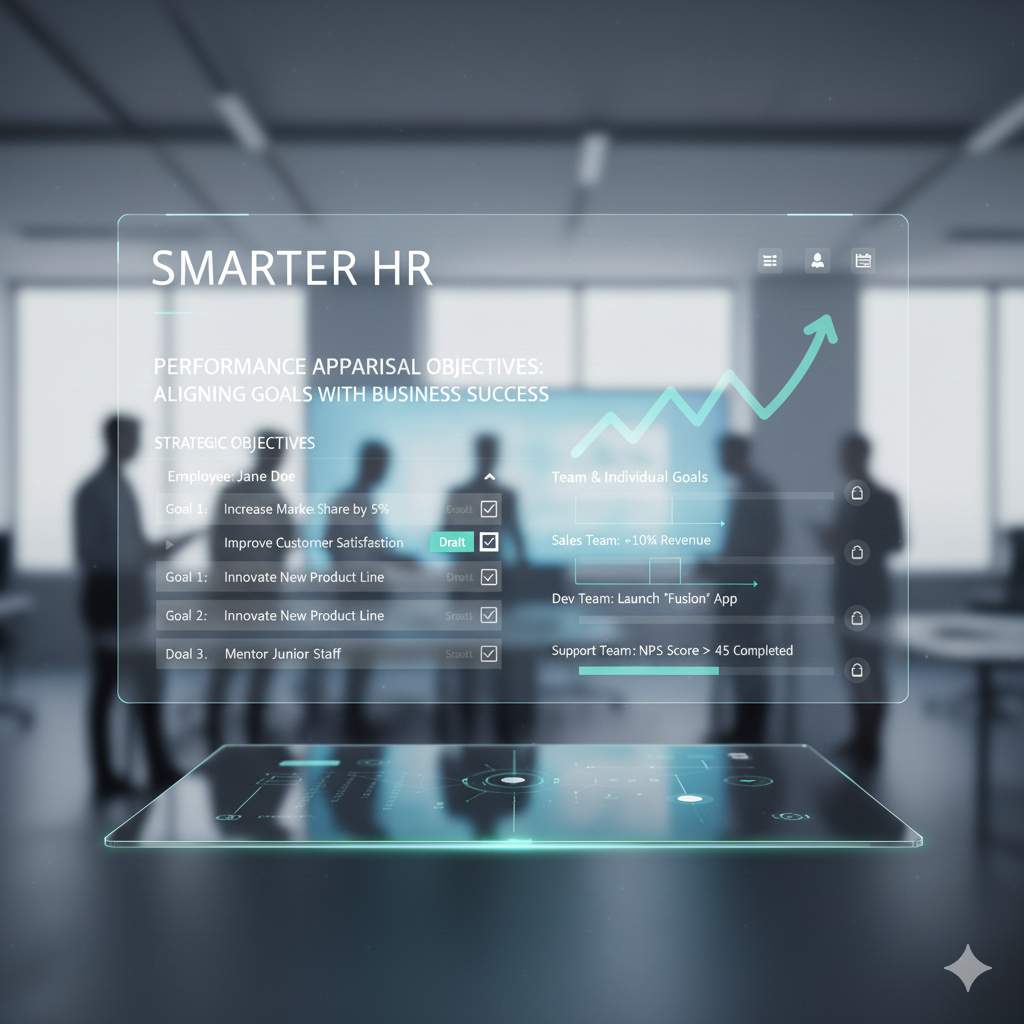In today’s fast-paced workplace, performance appraisals are no longer just annual reviews—they are continuous processes designed to drive employee engagement and align individual contributions with organizational success. When integrated into a Human Resource Information System (HRIS), performance appraisal objectives become more structured, measurable, and impactful.
This article explores the importance of performance appraisal objectives, how HRIS transforms them, and why aligning them with business success is critical for long-term growth.
What Are Performance Appraisal Objectives?
Performance appraisal objectives define the purpose and outcomes of the employee evaluation process. They guide HR teams, managers, and employees in ensuring that performance reviews are not just about rating employees, but about achieving meaningful results. Key objectives include:
- Improving Employee Performance – Identifying strengths and weaknesses to create personalized development plans.
- Enhancing Productivity – Ensuring employees are focused on priorities that contribute to business growth.
- Employee Development – Setting goals for skill enhancement and career progression.
- Reward and Recognition – Establishing a fair basis for promotions, bonuses, and recognition programs.
- Aligning Individual and Organizational Goals – Ensuring every employee’s work ties into overall business strategy.
Challenges with Traditional Performance Appraisals
Traditional appraisal methods often fail to achieve these objectives due to:
- Subjectivity – Reviews based heavily on manager opinions.
- Lack of Transparency – Employees unclear about evaluation criteria.
- Inconsistent Tracking – Goals set but not monitored throughout the year.
- Time-Consuming Processes – Manual paperwork slowing HR productivity.
These limitations often lead to disengagement, inaccurate performance data, and misalignment with business goals.
How HRIS Transforms Performance Appraisal Objectives
Modern HRIS platforms address these challenges by digitizing and optimizing the appraisal process. Here’s how:
- Clear Goal Setting: HRIS allows HR and managers to set SMART goals (Specific, Measurable, Achievable, Relevant, Time-bound) for each employee, ensuring alignment with organizational strategy.
- Continuous Feedback and Monitoring: Instead of once-a-year reviews, HRIS enables real-time performance tracking with ongoing feedback loops, making appraisals more dynamic and effective.
- Standardization Across the Organization: By using digital forms and rating scales, HRIS ensures consistency and reduces bias in performance evaluations.
- Data-Driven Insights: Through analytics and dashboards, HRIS provides leaders with actionable insights on workforce performance, helping in better decision-making for promotions, training, and succession planning.
- Employee Engagement: When employees can access their goals and track their progress through HRIS, they feel more empowered and motivated to achieve.
Benefits of Aligning Appraisal Objectives with Business Success
When appraisal objectives are managed through HRIS and tied directly to business strategy, organizations can:
- Increase Organizational Efficiency – Employees focus on tasks that drive growth.
- Improve Talent Retention – Fair and transparent reviews increase job satisfaction.
- Support Strategic Workforce Planning – Identify high-potential employees for leadership roles.
- Boost ROI – A motivated, skilled workforce contributes directly to profitability.
Conclusion
Integrating performance appraisal objectives into HRIS is a game-changer for organizations that want to align employee performance with business success. By shifting from outdated, subjective reviews to data-driven, transparent evaluations, companies can build stronger teams, boost productivity, and gain a competitive edge.
Smarter HR starts with smarter systems—and HRIS is the key to making performance appraisals meaningful, fair, and strategically aligned.

